Question:
I have analyzed two models of an inclined bored pile as a support with defined spring stiffness. A surface that can be moved horizontally (globally) is used for the force transmission. The bored pile in Model A is a support inclined by 15° with a spring stiffness of 2,000 kN/m in the axial direction. The bored pile of Model B is a support with the defined spring stiffnesses, divided into the respective horizontal and vertical components. The value of the spring stiffness is always the same (2,000 kN/m). In my opinion, both models are equivalent. Why are there different results in the deformation anyway?
Answer:
In principle, a support with the defined spring stiffness acts like a hinged column. To better illustrate the situation, use the "Spring" member type (see Image 01), which has the same effect within the program as a support with the defined spring stiffness.
In this case, Model A (Image 02) is an inclined hinged column, which ideally only absorbs axial forces.
In Model B (Image 03), the inclined hinged column is divided into two components so that an asymmetric frame is created.
Since the surface of both models is horizontally (globally) displaceable, a deflection occurs that has a higher deformation in the case of the hinged column in Model A than in the case of the asymmetric, stabilizing frame in Model B.
Therefore, the same deformations can only occur in both models if the surface is loaded perpendicular to its plane; that is, without lateral deflection (see Image 04).



































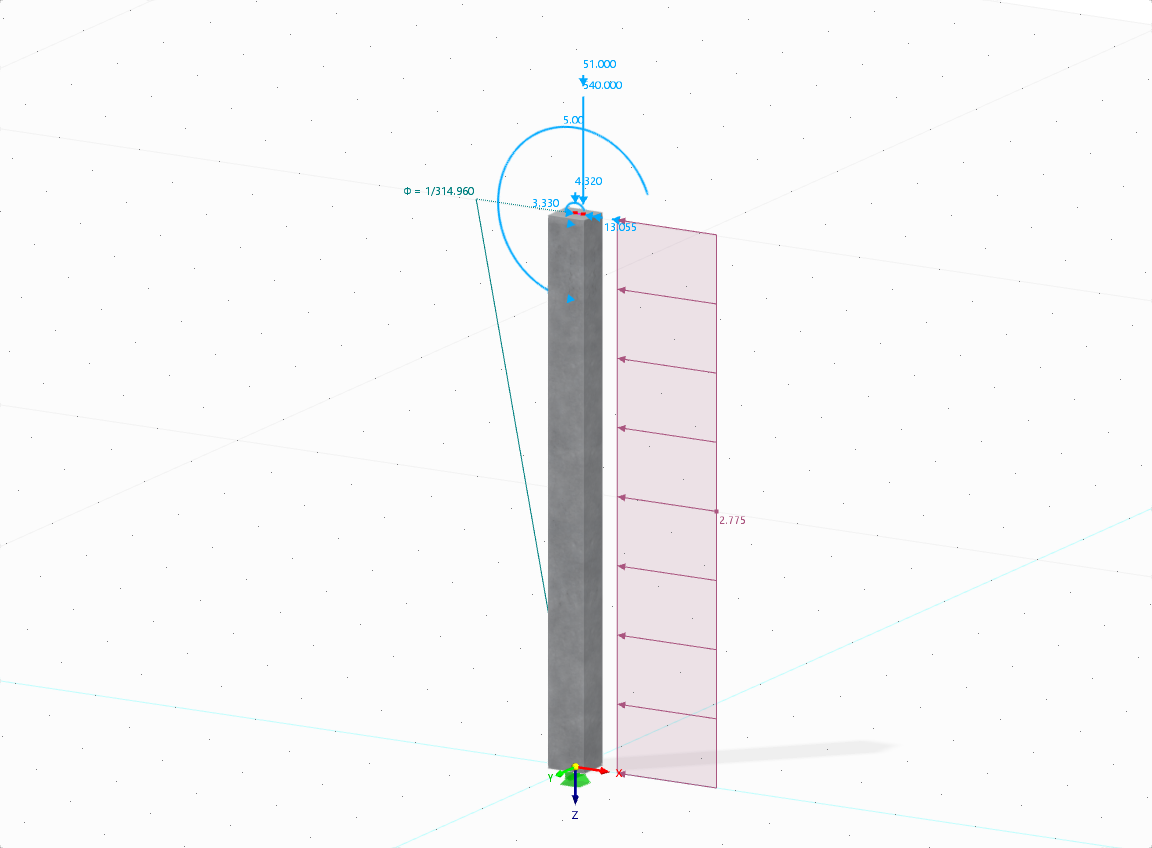

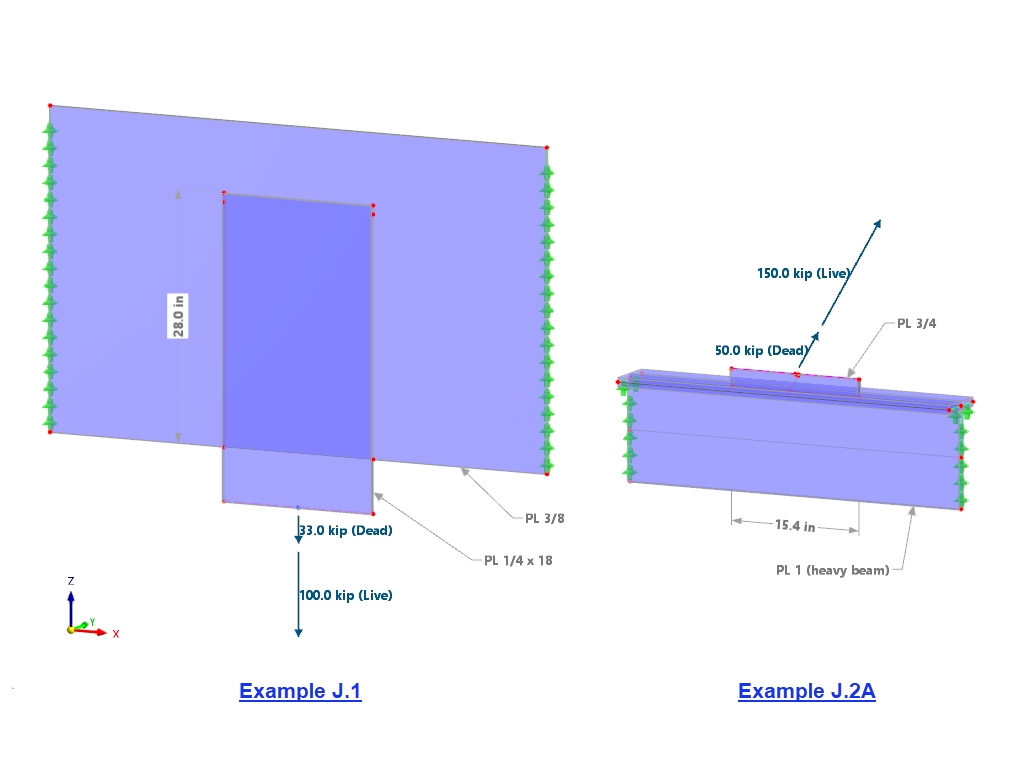










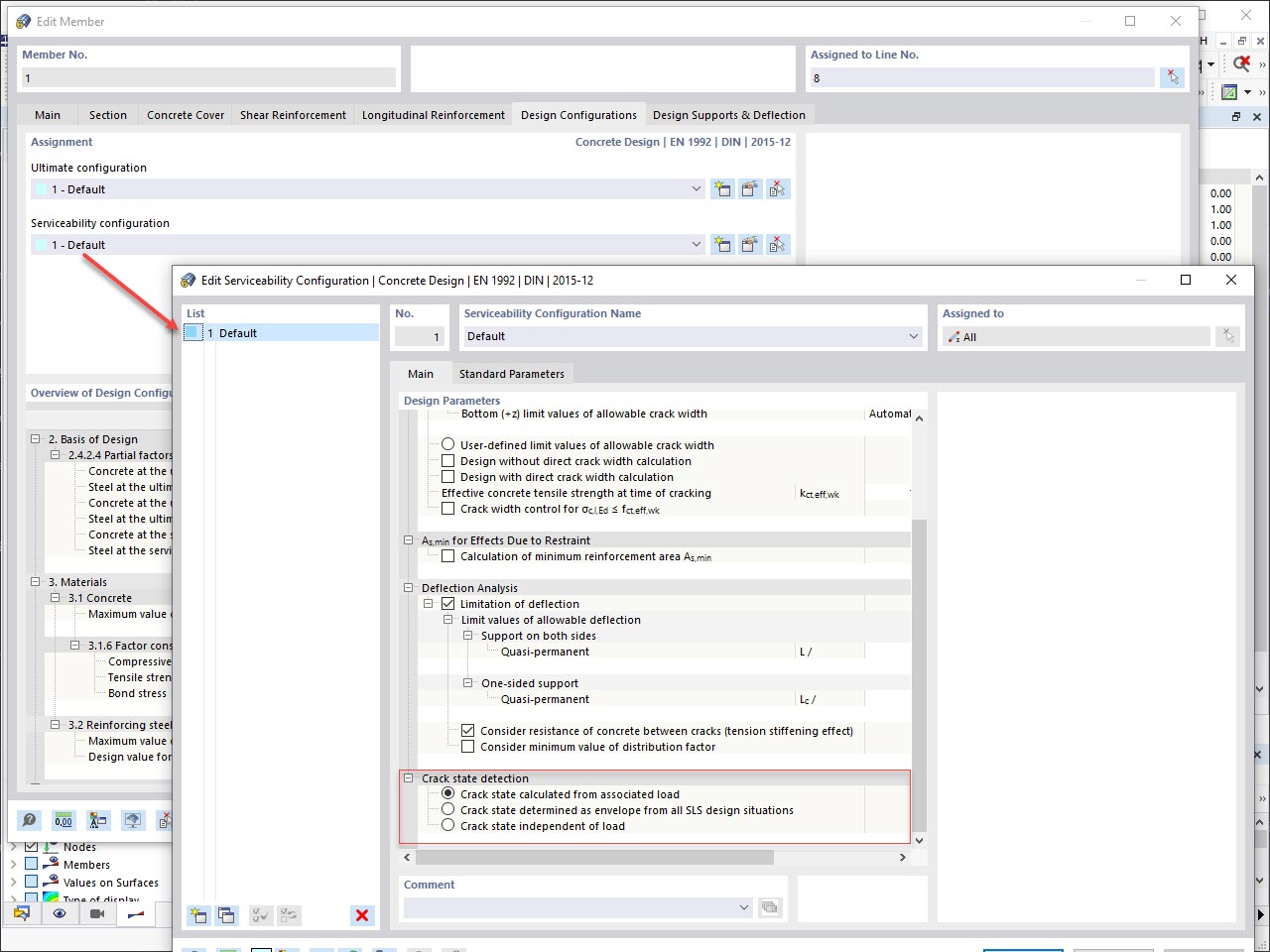
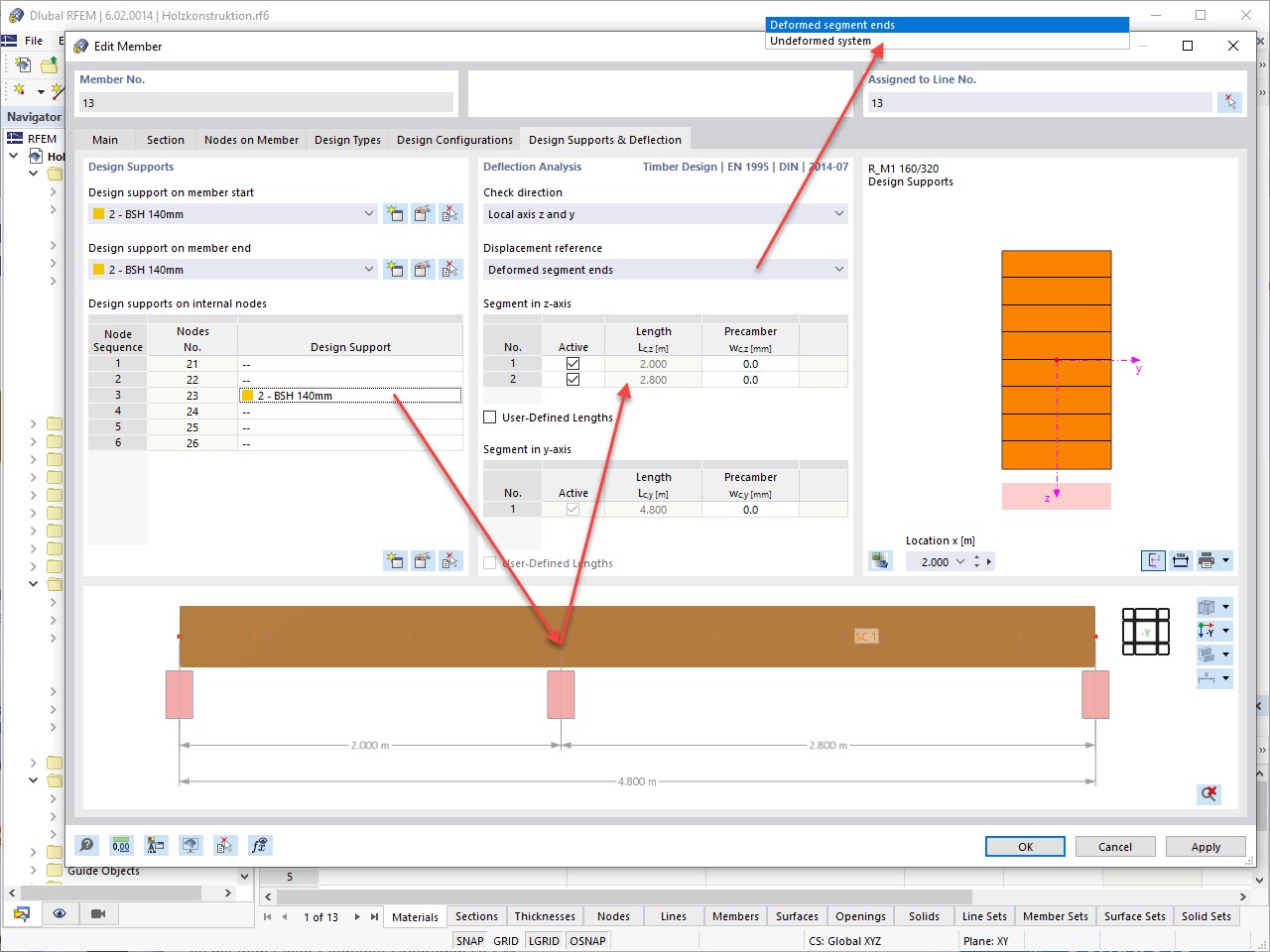
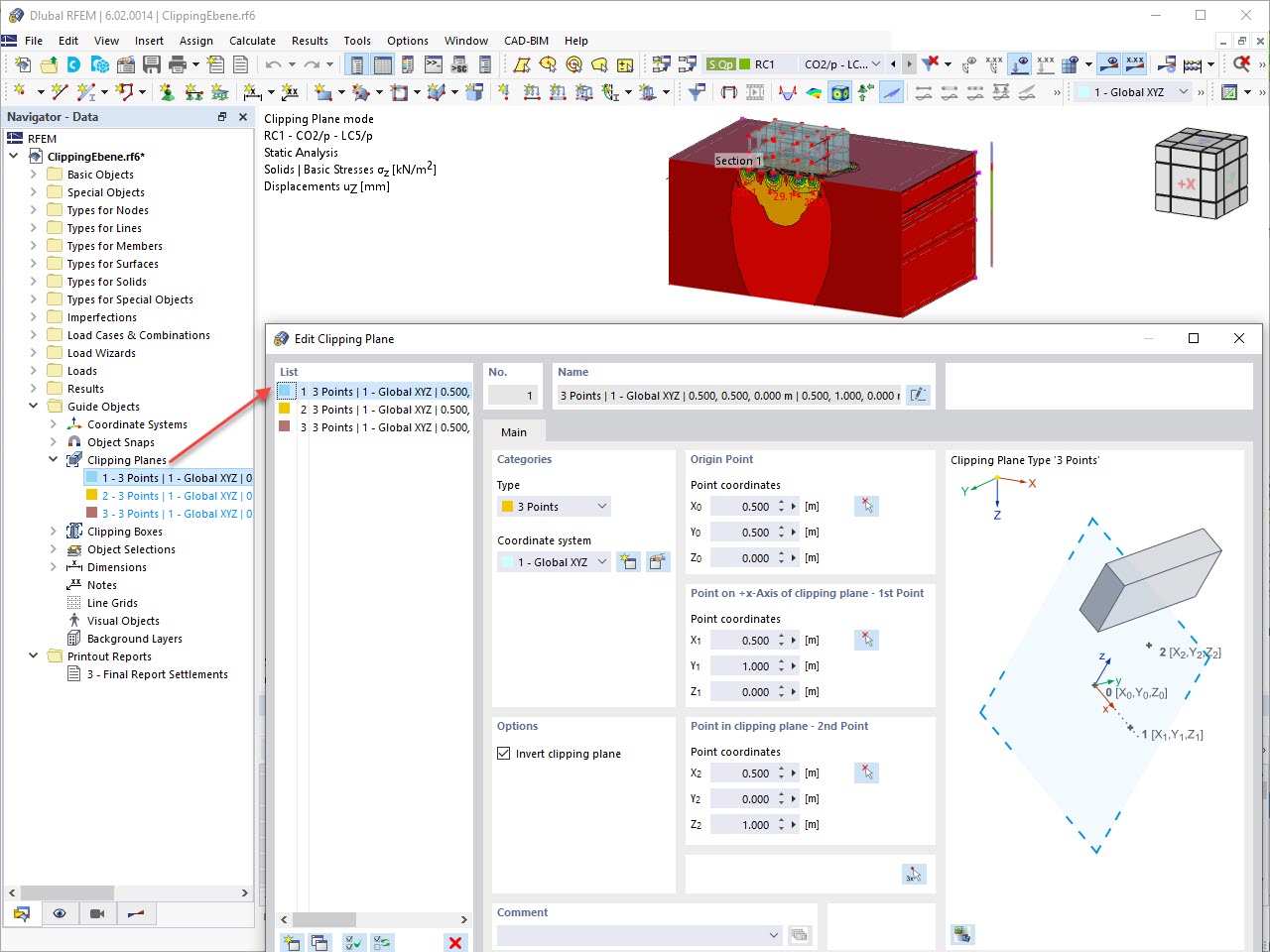




















.png?mw=600&hash=49b6a289915d28aa461360f7308b092631b1446e)





